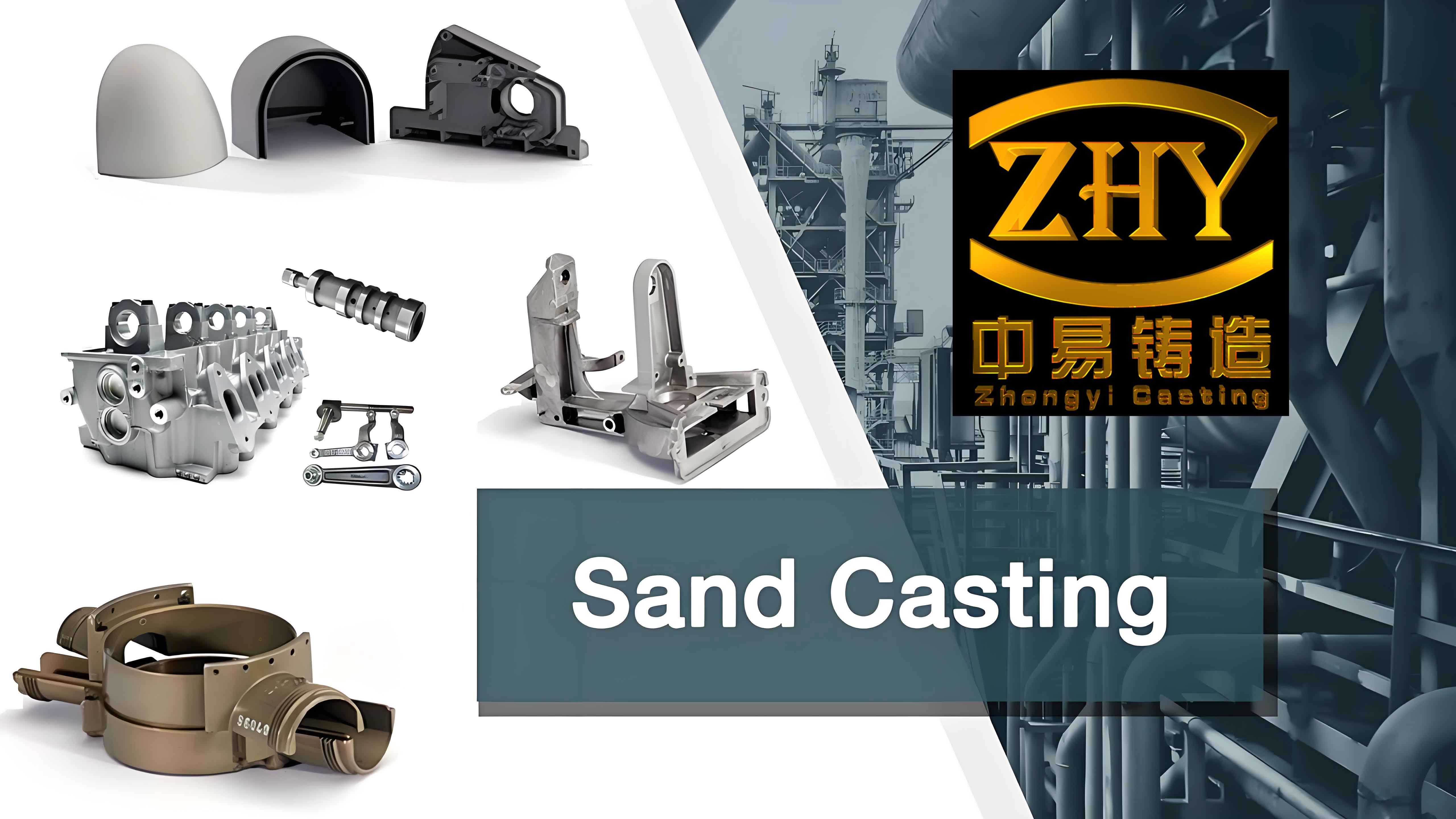Sand casting is an age-old manufacturing process that continues to play a vital role in the production of components for heavy machinery. In this extensive article, we will delve deep into the world of sand casting parts for heavy machinery, exploring their properties, manufacturing processes, and the crucial role they play in withstanding extreme loads.

Introduction
Heavy machinery operates in some of the most demanding environments and conditions. From construction sites to mining operations, these machines are subjected to immense forces and stresses. The components that make up these machines need to be robust, reliable, and capable of withstanding these extreme loads. Sand casting parts have emerged as a preferred choice for many applications due to their unique properties and manufacturing flexibility.
The Sand Casting Process
The sand casting process involves creating a mold using sand, into which molten metal is poured. The sand mold is typically made by packing sand around a pattern that defines the shape of the desired part. Once the metal has solidified, the mold is broken apart to reveal the cast part.
Materials Used in Sand Casting
A wide range of metals can be used in sand casting, including iron, steel, aluminum, and copper alloys. The choice of metal depends on the specific requirements of the heavy machinery component, such as strength, hardness, and corrosion resistance.
Advantages of Sand Casting
- Complex Shapes and Geometries
Sand casting allows for the production of parts with complex shapes and internal cavities that would be difficult or impossible to achieve using other manufacturing methods. - Low Tooling Costs
Compared to some other manufacturing processes, the tooling required for sand casting is relatively inexpensive, making it a cost-effective option for small to medium production runs. - Good Mechanical Properties
Sand cast parts can have excellent mechanical properties, making them suitable for withstanding the high loads and stresses encountered in heavy machinery.
Sand Casting Parts in Heavy Machinery
Heavy machinery encompasses a wide range of equipment, such as excavators, bulldozers, cranes, and mining trucks. Sand casting parts are used in various critical components of these machines.
Engine Components
- Cylinder Blocks
Sand cast cylinder blocks provide the structural integrity needed to withstand the high pressures and temperatures generated during engine operation. - Crankshafts
The strength and durability of sand cast crankshafts are essential for smooth power transmission.
Transmission Components
- Gearboxes
Sand cast gearboxes ensure precise gear engagement and can handle the torque and rotational forces. - Axles
Axles made through sand casting can withstand the heavy loads and shock absorptions.
Structural Components
- Frame Members
The frames of heavy machinery are often sand cast to provide the necessary strength and rigidity. - Chassis Components
Sand cast chassis parts contribute to the overall stability and durability of the machine.
Properties of Sand Casting Parts for Withstanding Extreme Loads
To withstand the extreme loads in heavy machinery, sand casting parts possess certain key properties.
Strength and Hardness
The metals used and the cooling process during casting influence the strength and hardness of the parts. High-strength alloys and controlled cooling can result in parts that can endure significant forces without deformation or failure.
Fatigue Resistance
Heavy machinery components undergo repetitive loading and unloading cycles. Sand cast parts with good fatigue resistance can withstand these cyclic stresses without developing cracks or fractures.
Corrosion Resistance
In harsh operating environments, corrosion can compromise the integrity of the parts. Special coatings or alloy compositions can be employed to enhance the corrosion resistance of sand casting parts.
Quality Control in Sand Casting
Ensuring the quality of sand casting parts is crucial to their performance and reliability in heavy machinery.
Inspection Techniques
- Visual Inspection
This involves checking for surface defects, such as porosity, cracks, and inclusions. - Dimensional Inspection
Precise measurement of the part’s dimensions to ensure they meet the specified tolerances. - Non-Destructive Testing
Methods like ultrasonic testing, magnetic particle inspection, and X-ray radiography are used to detect internal flaws.
Process Control
Controlling parameters such as the sand mixture, pouring temperature, and cooling rate helps minimize defects and ensure consistent quality.
Examples of Successful Applications
Several heavy machinery manufacturers have successfully utilized sand casting parts to enhance the performance and reliability of their equipment.
- Company A’s Bulldozer Blade
The bulldozer blade was sand cast using a high-strength steel alloy, enabling it to withstand the impact and abrasion during earthmoving operations. - Company B’s Crane Hook
The crane hook, fabricated through sand casting, demonstrated exceptional load-bearing capacity and fatigue resistance.
Future Trends in Sand Casting for Heavy Machinery
As technology continues to advance, the sand casting industry is also evolving.
Automation and Digitalization
Automated sand molding systems and digital process control are improving productivity and quality consistency.
New Materials and Alloys
Research is ongoing to develop advanced materials and alloys that offer enhanced properties for sand casting parts in heavy machinery.
Sustainable Practices
The focus on reducing environmental impact is driving the adoption of more sustainable sand casting processes and the recycling of materials.
Conclusion
Sand casting parts for heavy machinery play a crucial role in enabling these machines to operate reliably and efficiently in the face of extreme loads. The combination of complex geometries, customizable properties, and cost-effectiveness makes sand casting a preferred manufacturing process. Continued advancements in technology and quality control will ensure that sand casting remains a vital part of the heavy machinery industry for years to come.
| Sand Casting Part | Application in Heavy Machinery | Key Properties |
|---|---|---|
| Cylinder Block | Engine | High Strength, Heat Resistance |
| Axle | Transmission | Load-Bearing Capacity, Fatigue Resistance |
| Frame Member | Structural | Rigidity, Durability |
This is just a brief overview of the extensive topic of sand casting parts for heavy machinery. Further research and exploration in this field are essential to drive innovation and improvements in the manufacturing of heavy machinery components.
